 Earlier this week we talked about the Basic Pant–with an elastic waistband. Today we’ll build on that by showing you how to line pants! And when you’re ready to mix it up even more, check out more tutorials by clicking a button below:
Earlier this week we talked about the Basic Pant–with an elastic waistband. Today we’ll build on that by showing you how to line pants! And when you’re ready to mix it up even more, check out more tutorials by clicking a button below:









 Living in the hot state of Texas, you might wonder why I’d need to line pants. Well, it did actually get into the teens last week–which is rare–so the added lining was quite nice. But there are other reasons as well…..
Living in the hot state of Texas, you might wonder why I’d need to line pants. Well, it did actually get into the teens last week–which is rare–so the added lining was quite nice. But there are other reasons as well…..
Why should you line pants?
* It’s too cold outside! Little legs need added warmth and protection.
* The outer pants fabric is too scratchy (such as wool).
* The outer fabric is too thin and see-through.
* You may want them to be reversible.
* Because it’s easy and you just feel like it!
For these pants, I chose a boyish gingham fabric. However, the fabric was a bit lightweight.
 I worried that sitting outside our library on the rough curb would be too cold and uncomfortable.
I worried that sitting outside our library on the rough curb would be too cold and uncomfortable.
 So I decided to line the pants with a very soft knit. I simply used a men’s XL t-shirt for my lining fabric, sewed two pairs of pants, and joined them together at the waist and the leg hems.
So I decided to line the pants with a very soft knit. I simply used a men’s XL t-shirt for my lining fabric, sewed two pairs of pants, and joined them together at the waist and the leg hems.
 Easy, right?
Easy, right?
You bet!
Let’s get started….
 Linings can be added to any style of pants. For this method we’re using The Basic Pant. You’ll find the complete tutorial and pattern pieces HERE.
Linings can be added to any style of pants. For this method we’re using The Basic Pant. You’ll find the complete tutorial and pattern pieces HERE.
There are two ways to line pants–both are easy.
1. Baste the lining pieces and outer pieces together before sewing the pants (baste is a fancy word for “temporarily sewing two fabrics to hold them together”). This method is easy and fast but doesn’t work well if you have a scratchy fabric that might result in a scratchy seam. Also, if you have a bulky outer fabric and a bulky lining, it will result in a very thick seam. I’ll share this method in a pants tutorial coming next week.
2. Sew two separate pairs of pants (the outer pants and the inner lining pants) and join them at the waistband and leg hems. This method takes a bit longer but looks nicer. This is what we’ll be doing today.
Types of fabrics to use:
* Knits – Use a soft knit such as an old jersey T-shirt (don’t use the cheap scratchy jersey used for inexpensive T-shirts). Heavier interlock also works and is easily found in many solid colors at the fabric store.
* Fleece – If you live in colder climates, a lightweight fleece makes a great lining. Thick fleece will also work but will add bulk under the pants, which means you may need to expand the pattern a bit.
* Cotton – You can always use a simple layer of cotton, perhaps even the same fabric as the outer pants layer. Just double-layer the fabric and sew them up.
* Acetate and synthetic silks – Acetate feels like a lightweight silk and is wonderful for lining wool pants, skirts, and jackets. It’s warm without adding bulk and available in many colors in most fabric shops.
Okay, now that you have your outer and inner fabrics, let’s start cutting.
For my lining, I used an XL men’s T-shirt from a thrift shop. It’s very soft but was slightly too short for my pattern. No worries though, I just fudged things a bit and trimmed some length off the pants.
 Cut out two of each pattern piece, as outlined in the Basic Pants Tutorial.
Cut out two of each pattern piece, as outlined in the Basic Pants Tutorial.
 And start sewing them–each as a separate pair of pants. Sew each pair until you get to the waistband part.
And start sewing them–each as a separate pair of pants. Sew each pair until you get to the waistband part.
*NOTE: To keep the lining from feeling baggy or bunched when hanging inside, sew the lining pants with a seam allowance that is appx 1/4 inch larger than the outer pants. So, the gingham pants were sewn with a 1/4 inch seam allowance and the gray lining pants used a 1/2 inch seam allowance.
 And your two pairs should look like this:
And your two pairs should look like this:
 Make sure the lining pants are inside out, and the outer pants are right-side out. And tuck the lining pants right inside of the outer pants!
Make sure the lining pants are inside out, and the outer pants are right-side out. And tuck the lining pants right inside of the outer pants!
 Jiggle and pull them around so they fit nicely inside. It’s not always a perfect fit but I usually get pretty close.
Jiggle and pull them around so they fit nicely inside. It’s not always a perfect fit but I usually get pretty close.
 Okay, now we’re going to connect the fabrics at the waistband. Pin everything together so nothing shifts as you start sewing.
Okay, now we’re going to connect the fabrics at the waistband. Pin everything together so nothing shifts as you start sewing.
NOTE: If you’re using thicker fabrics and don’t want them to bulk up around the waist and hems, trim the lining down at the waist and at the hems so that they are NOT folded up with the hem or waistband. Then fold the waistband over to create a casing, as you normally would, sewing the edge of the lining inside the waistband so that everything is connected.
NOTE #2: If you’d like to make your pants reversible…
This is a bit trickier because you need to leave a small opening for the elastic waistband. But in a nut shell, leave an opening in top back seam of the lining pants as you’re sewing–this is where the casing will be. Then tuck the edges of each pant under at the waistband and sew them together, so the edges are nicely finished. Sew a 1-inch wide casing for the waistband, string the elastic through, and sew the casing closed. For the leg hems, fold both edges under as well. Now you have identical pants on both sides!
 Serge the two fabrics together all the way around the waistband (remove each pin as you serge!)
Serge the two fabrics together all the way around the waistband (remove each pin as you serge!)
If you don’t have a serger, no worries!
* Use a zig-zag stitch or
* Sew the fabrics with a straight stitch and leave the edges raw or
* You can get real fancy by pulling the lining back out and with right sides of both pants together, sew them at the waist and then flip the lining pants back inside.
Do what works for you.
 Do the same for the leg hems. Try to get the fabrics as smooth as possible inside the pants and trim off any uneven ends.
Do the same for the leg hems. Try to get the fabrics as smooth as possible inside the pants and trim off any uneven ends.
 Pin the layers together and serge around the bottom of each pant leg.
Pin the layers together and serge around the bottom of each pant leg.
If you don’t have a serger, do a zigzag, straight stitch, or fold each end in slightly and sew them together so there are no exposed edges. Then iron and sew your leg hems in place.
 Finally, create a waistband–as outlined in the Basic Pants Tutorial–and insert your elastic.
Finally, create a waistband–as outlined in the Basic Pants Tutorial–and insert your elastic.
 And you’re done!
And you’re done!
One cozy-yet-stylin, warm pair of pants.
 There’s that soft lining inside:
There’s that soft lining inside:
 The perfect pants for a chilly day in our old downtown square, as Owen reads his favorite book from the library–There’s a Wocket in my Pocket…and turns his head when we get to the Bofa on the Sofa. The mean looking Bofa is intimidating.
The perfect pants for a chilly day in our old downtown square, as Owen reads his favorite book from the library–There’s a Wocket in my Pocket…and turns his head when we get to the Bofa on the Sofa. The mean looking Bofa is intimidating.
 And here’s where he tells me he has to go potty and tries to hold it in.
And here’s where he tells me he has to go potty and tries to hold it in.
Photo shoot is over.
 Enjoy your warm pants!
Enjoy your warm pants!
————————————————————–
Some answers to your Basic Pants Questions:
* The pants are kind of long….
The pattern is for a slim/tall 3 year old. There’s still a lot of give-room because the pattern uses an elastic waistband, but overall the pants are slimmer and longer than other similar patterns. If the pattern is too long for you, just chop some of it off!
* How can I adjust the pattern for cloth diapers?
The pattern is made to fit over a disposable diaper or underwear. If you need to add more room in the bum try this:
–extend the curve of the back crotch piece
–bring the waist up a bit on both the front and back pieces.
* How did you get the stripes in your pants to line up?
When cutting your pants pieces out, make sure your fabric is folded with the stripes identical on the top and bottom layers. Sew as precisely as you can with the same seam allowance everywhere and things should line up for you too!
* Do you iron seams to the side or down the center?
You can do either. With serged edges, you have to iron to the side. There’s no rule on this. Mostly you want well pressed seams so your clothing looks well made!
* Where did you get Owen’s blue shirt and will there be a tutorial for it?
The shirt was a cool find in Singapore. Wish I had bought 3 more! And I wish I had time to do a tutorial. But I can’t commit to that now. Maybe one day…


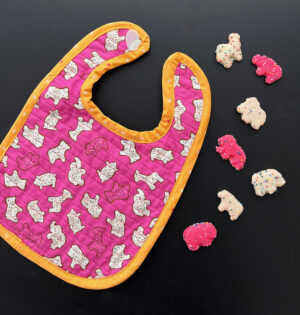
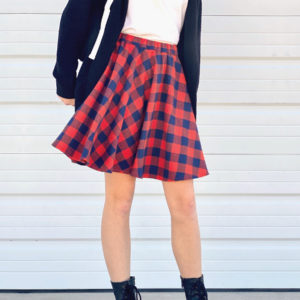

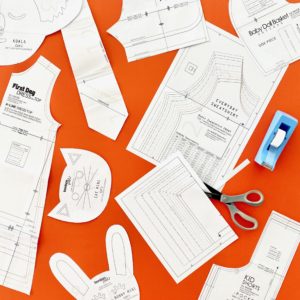




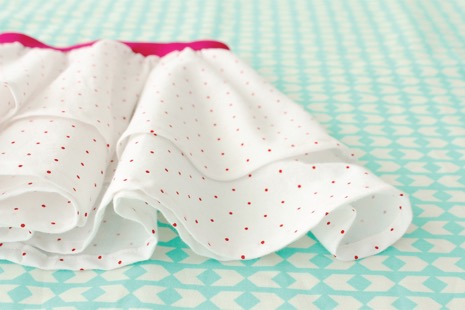










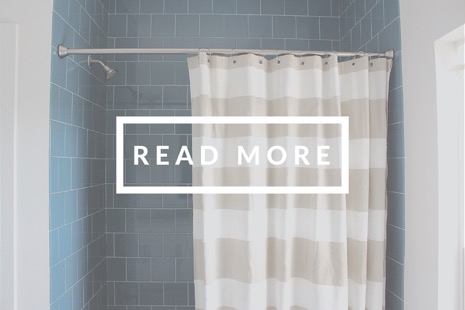
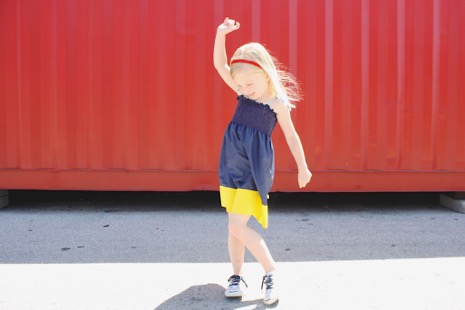
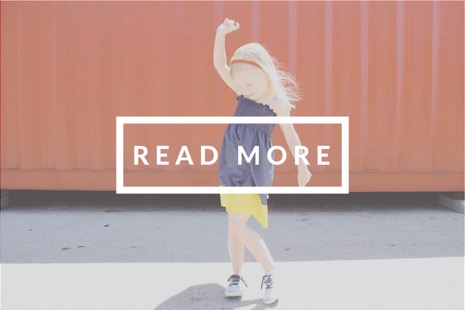

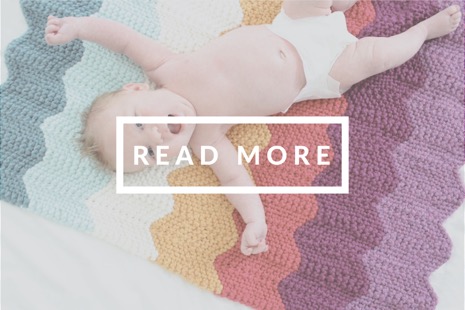

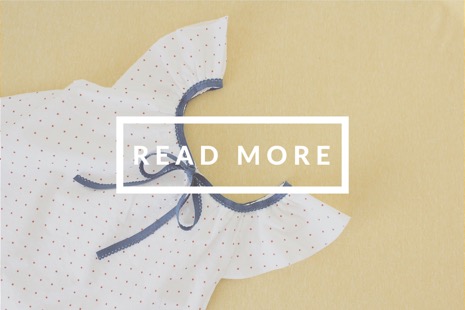


Hi, Thank you so much for these tutorials. I’ve been doing all the pants/shorts ones for my lil man and they are great. I’m having trouble with these lined ones though. I did the flat front shorts and sewed the lining 1/4 in larger like suggested; there’s tons of puckering in the the back when trying to stitch the waist bands together. Suggestions please=) Thank you!
I’m having the same problem as above… I used a regular cotton for the lining and not a stretch knit. How do we overcome the fact that the lining around the waist is now 1 inch smaller and around the legs 1/2 inch smaller? Any tips would be appreciated! I love the pattern though, I have an adopted son from China (who’s really skinny) and needs elastic waist pants (he only has one hand) so he can pull them up himself (buttons are tough). So these pants are perfect. The unlined denim ones turned out great… just stuck on the lining for the flat front linen ones.
Thanks!
Thank you for all you tutorials I have a 3.5 yr oldgreat grandson that I am sewing for and your site is great! I will be embellshing with machien embroidery on his outfits as well.He will be so thrilled he helps me put the trhead in the holder and we play what color is this while we do.
Thanks so much for this tutorial!!! I love to applique my sons shirts and I wanted some matching pants to go with them but to buy them from the boutiques is ridiculous!! Plus I just love to make things for him myself!!! Thank you so much for sharing!!
I know this is an old post, but hoping you’ll still see this…
Using this tute to make Christmas PJ’s. My son wears cloth diapers. I see your note about extending the curve on the crotch, but my question is – do you extend down from the top or up from the bottom? Is there a difference?
Thanks so much for this tutorial. You make it look so simple!!
Not Dana…but, I found the post on Sew Liberated to be just what I needed when my daughter was in her cloth diapers. You drop the back crotch one CM, then extend the inseam 1 CM, so the leg is still the same length, but more room for the fluffy butt!! Here’s her post about it: http://sewliberated.typepad.com/sew_liberated/2010/05/quick-change-trousers-for-the-clothdiapered-bum.html
Making dress pants with a satin lining- should I hem the lining separately so they hang smooth?
Dear Dana,
I’m trying to make lined pants with your tutorial and want to add sideseam pockets! I can’t wrap my mind around how to do this! Aaahh 🙂
Can you help me or point me to a tutorial that would be helpful?
Thanks a LOT 🙂
I’ve never made pants before and have had reservations because I’m not a great sewer and I’ve never been sure how to make pants to fit over my little man’s cloth diapers. Thank you for the detailed instructions and the tips for making them fit over fluff! I can’t wait to try making a pair.
Hi! I haven’t actually tried your pattern/instructions yet but I have had a look at your tips and I want to thank you first of all for sharing that! I love the pants and I’m looking forward to making a pair for my daughter soon!
Keep posting, you are a great sewing bee and designer!
All the best,
Joana (in Northern Ireland)
Hi! Thank you so much for this wonderful tutorial ! Do you sell home made clothing? Regards, Joana
This is an amazing tutorial! The photos and instructions are so clear and clever that I can’t wait to make a nice pair of lined pants for my child (we’re in the north) so I might line a cute cotton print with fleece or something else cozy!
Hi Dana,
I am big fan of your creations and tutorials…you teach in a simple and easy ….I have learnt lot of things from your tutorial…Thank you for effort and time …:-) ….Recently made Reversible pant using your pant with lining tutorial …My son just loved it….
Here is pic of the pant….
https://www.facebook.com/ShubhaCraftyCorner/photos/pb.230481743965219.-2207520000.1487559902./413405585672833/?type=3&theater
Thanks a lot for sharing this, really really helpful! I have a question, for lining the pants, the crotch part of outer and lining isn’t sewn together? Only need sewing the waist area and leg hem? Again many thanks!